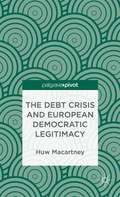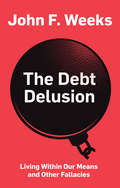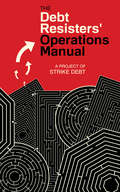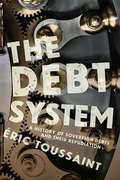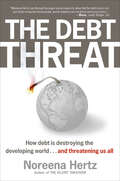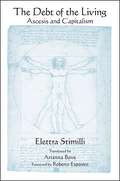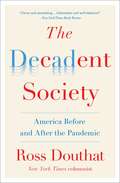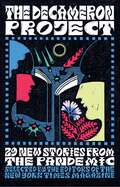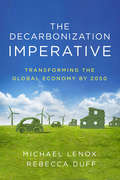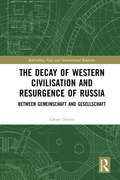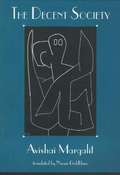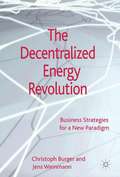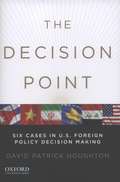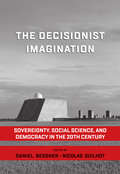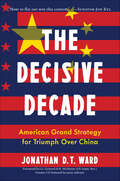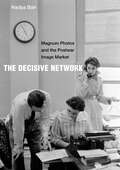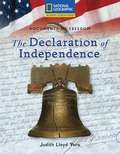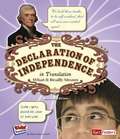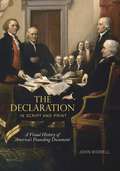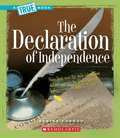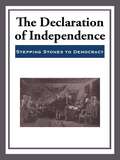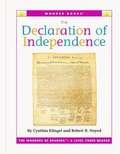- Table View
- List View
The Debt Crisis and European Democratic Legitimacy
by Huw MacartneyHuw Macartney considers the politics of depoliticisation in response to the Euro-zone debt crisis, and the limits to depoliticisation as indicated by recent resistance movements.
The Debt Delusion: Living Within Our Means and Other Fallacies
by John F. Weeks‘Governments should spend no more than their tax income.’ Most people in Europe and North America accept this statement as simple common sense. It resonates with the deeply engrained economic metaphors that dominate public discourse, from ‘living within your means’ to ‘balancing the budget’ – all necessary, or so conventional wisdom holds, to avoid the dangers of debt, taxation and financial ruin. This book shows how these homely metaphors constitute the ‘debt delusion’: a set of plausible-sounding yet false ideas that have been used to justify damaging austerity policies. John Weeks debunks these myths, explaining the true story behind public spending, taxation, and debt, and their real function in the management of our economies. He demonstrates that disputes about public finances are not primarily technical matters best left to specialists and experts, as many politicians would have us believe, but rather fundamentally questions about our true political priorities. Requiring no prior economic knowledge, this is an ideal primer for anyone wishing to cut through the rhetoric and misinformation that dominate political debates on economics and become an informed citizen.
The Debt Resisters' Operations Manual (Common Notions)
by Strike DebtFor debtors everywhere who want to understand how the system really works, this handbook provides practical tools for fighting debt in its most exploitative forms. Over the last 30 years as wages have stagnated across the country, average household debt has more than doubled. Increasingly, people are forced to take on debt to meet their needs; from housing to education and medical care. The results—wrecked lives, devastated communities, and an increasing reliance on credit to maintain basic living standards—reveal an economic system that enriches the few at the expense of the many. Detailed strategies, resources, and insider tips for dealing with some of the most common kinds of debt are covered in this manual, including credit card debt, medical debt, student debt, and housing debt. It also contains tactics for navigating the pitfalls of personal bankruptcy, as well as information on how to be protected from credit reporting agencies, debt collectors, payday lenders, check-cashing outlets, rent-to-own stores, and more. Additional chapters cover tax debt, sovereign debt, the relationship between debt and climate, and an expanded vision for a movement of mass debt resistance.
The Debt System: A History of Sovereign Debts and Their Repudiation
by Éric Toussaint“A compelling explanation of the deep-seated mechanisms at work in the international credit system” from the coauthor of Debt, the IMF, and the World Bank (Counterfire).For as long as there have been rich nations and poor nations, debt has been a powerful force for maintaining the unequal relations between them. Treated as sacrosanct, immutable, and eternally binding, it has become the yoke of choice for imperial powers in the post-colonial world to enforce their subservience over the global south. In this ground-breaking history, renowned economist Éric Toussaint argues for a radical reversal of this balance of accounts through the repudiation of sovereign debt.“Since 2008 CADTM has campaigned for ‘a new doctrine of illegitimate, illegal, odious, and unsustainable debt’ cancellation. This doctrine includes considerations of whether the debtor state is democratic, whether it respects human rights, whether the debt is incurred within the framework of ‘structural adjustments’ (enforced austerity), and includes all debts incurred to pay back previous odious debts. On grounds of global social justice, The Debt System makes a strong case for this new doctrine.” —Against the Current“This work has much to commend it; it provides detailed analyses of the impact of indebtedness in several nations . . . The author shows that, contrary to orthodox arguments, debt repudiation can be both justified and successfully carried out. I recommend the book wholeheartedly.” —Counterfire
The Debt Threat: How Debt is Destroying the Developing World . . . and Threatening Us All
by Noreena HertzNoreena Hertz, one of the world's leading experts on economic globalization, looks at the history of third-world debt and its crippling effects on people in developing countries.Drawing from her impressive debt-relief campaign, fact-finding travels, and meetings with top-ranking officials, Hertz offers a probing analysis of the origins of this rampant burden and its evolution through the decades. With clear principles of justice, she uncovers the imbalance of power and misuse of corrupt dictators and reckless lenders.
The Debt of the Living: Ascesis and Capitalism (SUNY series in Contemporary Italian Philosophy)
by Elettra StimilliMax Weber's account of the rise of capitalism focused on his concept of a Protestant ethic, valuing diligence in earning and saving money but restraint in spending it. However, such individual restraint is foreign to contemporary understandings of finance, which treat ever-increasing consumption and debt as natural, almost essential, for maintaining the economic cycle of buying and selling.In The Debt of the Living, Elettra Stimilli returns to this idea of restraint as ascesis, by analyzing theological and philosophical understandings of debt drawn from a range of figures, including Saint Paul, Schmitt and Agamben, Benjamin and Marx, Nietzsche and Freud, and Foucault. Central to this analysis is the logic of "profit for profit's sake"—an aspect of Weber's work that Stimilli believes has been given insufficient attention. Following Foucault, she identifies this as the original mechanism of a capitalist dispositif that feeds not on a goal-directed rationality, but on the self-determining character of human agency. Ascesis is fundamental not because it is characterized by renunciation, but because the self-discipline it imposes converts the properly human quality of action without a predetermined goal into a lack, a fault, or a state of guilt: a debt that cannot be settled. Stimilli argues that this lack, which is impossible to fill, should be seen as the basis of the economy of hedonism and consumption that has governed global economies in recent years and as the premise of the current economy of debt.
The Decadent Society: How We Became the Victims of Our Own Success
by Ross DouthatFrom the New York Times columnist and bestselling author of Bad Religion, a powerful portrait of how our turbulent age is defined by dark forces seemingly beyond our control Today the Western world seems to be in crisis. But beneath our social media frenzy and reality television politics, the deeper reality is one of drift, repetition, and dead ends. The Decadent Society explains what happens when a rich and powerful society ceases advancing—how the combination of wealth and technological proficiency with economic stagnation, political stalemates, cultural exhaustion, and demographic decline creates a strange kind of &“sustainable decadence,&” a civilizational languor that could endure for longer than we think. Ranging from our grounded space shuttles to our Silicon Valley villains, from our blandly recycled film and television—a new Star Wars saga, another Star Trek series, the fifth Terminator sequel—to the escapism we&’re furiously chasing through drug use and virtual reality, Ross Douthat argues that many of today&’s discontents and derangements reflect a sense of futility and disappointment—a feeling that the future was not what was promised, that the frontiers have all been closed, and that the paths forward lead only to the grave. In this environment we fear catastrophe, but in a certain way we also pine for it—because the alternative is to accept that we are permanently decadent: aging, comfortable and stuck, cut off from the past and no longer confident in the future, spurning both memory and ambition while we wait for some saving innovation or revelations, growing old unhappily together in the glowing light of tiny screens. Correcting both optimists who insist that we&’re just growing richer and happier with every passing year and pessimists who expect collapse any moment, Douthat provides an enlightening diagnosis of the modern condition—how we got here, how long our age of frustration might last, and how, whether in renaissance or catastrophe, our decadence might ultimately end.
The Decameron Project: 29 New Stories from the Pandemic
by New York Times MagazineA stunning collection of new short stories originally commissioned by The New York Times Magazine as the COVID-19 pandemic swept the world, from twenty-nine authors including Margaret Atwood, Tommy Orange, Colm Toibin, Kamilia Shamsie and more, in a project inspired by Boccaccio&’s The Decameron.When reality is surreal, only fiction can make sense of it. In 1353, Giovanni Boccaccio wrote &“The Decameron&”: one hundred nested tales told by a group of young men and women passing the time at a villa outside Florence while waiting out the gruesome Black Death, a plague that killed more than 25 million people. Some of the stories are silly, some are bawdy, some are like fables. In March of 2020, the editors of The New York Times Magazine created The Decameron Project, an anthology with a simple, time-spanning goal: to gather a collection of stories written as our current pandemic first swept the globe. How might new fiction from some of the finest writers working today help us memorialize and understand the unimaginable? And what could be learned about how this crisis will affect the art of fiction? These twenty-nine new stories, from authors including Margaret Atwood, Tommy Orange, Colm Toibin, Kamila Shamsie and David Mitchell vary widely in texture and tone. Their work will be remembered as a historical tribute to a time and place unlike any other in our lifetimes, and offer perspective and solace to the reader now and in a future where coronavirus is, hopefully, just a memory. Table of Contents: &“Preface&” by Caitlin Roper &“Introduction&” by Rivka Galchen &“Recognition&” by Victor LaValle &“A Blue Sky Like This&” by Mona Awad &“The Walk&” by Kamila Shamsie &“Tales from the LA River&” by Colm Tóibín &“Clinical Notes&” by Liz Moore &“The Team&” by Tommy Orange &“The Rock&” by Leila Slimani &“Impatient Griselda&” by Margaret Atwood &“Under the Magnolia&” by Yiyun Li &“Outside&” by Etgar Keret &“Keepsakes&” by Andrew O&’Hagan &“The Girl with the Big Red Suitcase&” by Rachel Kushner &“The Morningside&” by Téa Obreht &“Screen Time&” by Alejandro Zambra &“How We Used to Play&” by Dinaw Mengestu &“Line 19 Woodstock/Glisan&” by Karen Russell &“If Wishes Was Horses&” by David Mitchell &“Systems&” by Charles Yu &“The Perfect Travel Buddy&” by Paolo Giordano &“An Obliging Robber&” by Mia Cuoto &“Sleep&” by Uzodinma Iweala &“Prudent Girls&” by Rivers Solomon &“That Time at My Brother&’s Wedding&” by Laila Lalami &“A Time of Death, The Death of Time&” by Julián Fuks &“The Cellar&” by Dina Nayeli &“Origin Story&” by Matthew Baker &“To the Wall&” by Esi Edugyan &“Barcelona: Open City&” by John Wray &“One Thing&” by Edwidge Danticat
The Decarbonization Imperative: Transforming the Global Economy by 2050
by Michael Lenox Rebecca DuffTime is of the essence. Climate change looms as a malignant force that will reshape our economy and society for generations to come. If we are going to avoid the worst effects of climate change, we are going to need to effectively "decarbonize" the global economy by 2050. This doesn't mean a modest, or even a drastic, improvement in fuel efficiency standards for automobiles. It means 100 percent of the cars on the road being battery-powered or powered by some other non-carbon-emitting powertrain. It means 100 percent of our global electricity needs being met by renewables and other non-carbon-emitting sources such as nuclear power. It means electrifying the global industrials sector and replacing carbon-intensive chemical processes with green alternatives, eliminating scope-one emissions—emissions in production—across all industries, particularly steel, cement, petrochemicals, which are the backbone of the global economy. It means sustainable farming while still feeding a growing global population. Responding to the existential threat of climate change, Michael Lenox and Rebecca Duff propose a radical reconfiguration of the industries contributing the most, and most harmfully, to this planetary crisis. Disruptive innovation and a particular calibration of industry dynamics will be key to this change. The authors analyze precisely what this might look like for specific sectors of the world economy—ranging from agriculture to industrials and building, energy, and transportation—and examine the possible challenges and obstacles to introducing a paradigm shift in each one. With regards to existent business practices and products, how much and what kind of transformation can be achieved? The authors assert that markets are critical to achieving the needed change, and that they operate within a larger scale of institutional rules and norms. Lenox and Duff conclude with an analysis of policy interventions and strategies that could move us toward clean tech and decarbonization by 2050.
The Decay of Western Civilisation and Resurgence of Russia: Between Gemeinschaft and Gesellschaft (Rethinking Asia and International Relations)
by Glenn DiesenWhat explains the rise of populist movements across the West and their affinity towards Russia? UKIP’s Brexit victory, Trump’s triumph, and the successive elections and referendums in Europe were united by a repudiation of the liberal international order. These new political forces envision the struggle to reproduce and advance Western civilisation to be fought along a patriotism–cosmopolitanism or nationalism–globalism battlefield, in which Russia becomes a partner rather than an adversary. Armed with neomodernism and geoeconomics, Russia has inadvertently taken on a central role in the decay of Western civilisation. This book explores the cooperation and competition between Western and Russian civilisation and the rise of anti-establishment political forces both contesting the international liberal order and expressing the desire for closer relations with Russia. Diesen proposes that Western civilisation has reached a critical juncture as modern society (gesellschaft) has overwhelmed and exhausted the traditional community (gemeinschaft) and shows the causes for the decay of Western civilisation and the subsequent impact on cooperation and conflict with Russia. The author also considers whether Russia’s international conservativism is authentic and can negate the West’s decadence, or if it is merely a shrewd strategy by a rival civilisation also in decay. This volume will be of interest to scholars of international relations, political science, security studies, international political economy, and Russian studies.
The Decent Society
by Avishai Margalit Naomi Goldblum<P>Avishai Margalit builds his social philosophy on this foundation: a decent society, or a civilized society, is one whose institutions do not humiliate the people under their authority, and whose citizens do not humiliate one another. <P>What political philosophy needs urgently is a way that will permit us to live together without humiliation and with dignity. Most of the philosophical attention nowadays is drawn to the ideal of the just society based on the right balance between freedom and equality. The ideal of the just society is a sublime one but hard to realize. The decent society is an ideal which can be realized even in our children's lifetime. We should get rid of cruelty first, advocated Judith Shklar. Humiliation is a close second. There is more urgency in bringing about a decent society than in bringing about a just one. Margalit begins concretely where we live, with all the infuriating acts of humiliation that make living in the world so difficult. He argues in a concrete way in the spirit of Judith Shklar and Isaiah Berlin. <P>This is a social philosophy that resists all those menacing labels that promote moral laziness, just as it urges us to get beyond the behavior that labels other human beings. Margalit can't be earmarked as liberal or conservative. If a label is necessary, then the most suitable is George Orwell's humane socialism, a far cry from Animal Farm socialism with its many tools of oppression. How to be decent, how to build a decent society, emerges out of Margalit's analysis of the corrosive functioning of humiliation in its many forms. This is a thoroughly argued and, what is much more, a deeply felt book that springs from Margalit's experience at the borderlands of conflicts between Eastern Europeans and Westerners, between Palestinians and Israelis.
The Decentralization Dilemma in India
by Catriona PurfieldA report from the International Monetary Fund.
The Decentralized Energy Revolution
by Christoph Burger Jens WeinmannThe global energy system stands at the verge of a far-reaching paradigm shift. The established model of centralized supply services will be challenged by new, decentralized technologies, with Germany being an international role model for energy efficiency and renewable energy generation.
The Decision Point: Six Cases in U.S. Foreign Policy Decision Making
by David Patrick Houghton<p>Filling a gap in the U.S. foreign policy textbook market, this innovative introduction shows students how real American foreign policy makers make real decisions. Drawing on and summarizing a vast amount of literature, author David Patrick Houghton introduces students to three basic theories of decision-making. He then applies each of these perspectives to six well-known historical cases that range from classic to contemporary: the Bay of Pigs, the Cuban Missile Crisis, the Vietnam War, the Iran Hostage Crisis, the Kosovo War, and the Iraq War. Houghton uses the crucial "decision points" of these events to give students a sense of what it is actually like to make high-level decisions. He also shows how the theories discussed in the book can be applied to these case studies. <p>Featuring a direct, accessible writing style, coverage of recent advances in the field--including new psychological models like prospect theory and poliheuristic theory--and an affordable price, <i>The Decision Point: Six Cases in U.S. Foreign Policy Decision Making</i> serves as a perfect text or supplement for courses in U.S. Foreign Policy and Foreign Policy Decision-Making.</p>
The Decisionist Imagination: Sovereignty, Social Science and Democracy in the 20th Century
by Nicolas Guilhot Daniel BessnerIn the decades following World War II, the science of decision-making moved from the periphery to the center of transatlantic thought. The Decisionist Imagination explores how “decisionism” emerged from its origins in prewar political theory to become an object of intense social scientific inquiry in the new intellectual and institutional landscapes of the postwar era. By bringing together scholars from a wide variety of disciplines, this volume illuminates how theories of decision shaped numerous techno-scientific aspects of modern governance—helping to explain, in short, how we arrived at where we are today.
The Decisive Decade: American Grand Strategy for Triumph Over China
by Jonathan D. WardWith a focus on the economic battlefront and in-depth analysis of the diplomatic, military, and ideological arenas, the world’s foremost expert on US-China global competition offers a rousing, strategic call to action and playbook—harvesting all of our nation’s ingenuity, confidence, and will power—to outcompete the long-term strategies of China and its Communist Party. In The Decisive Decade, Dr. Jonathan D.T. Ward—China scholar and founder of the Atlas Organization, a consultancy focused on US-China global competition—offers a comprehensive framework for how the United States can, and must, defeat China on the world stage economically, diplomatically, militarily, and ideologically. International security and American supremacy are at stake—and now is the time for the US to take action. China’s global power and influence grows every day. Working from a deep sense of national identity, the Chinese Communist Party is leading its country toward what it deems “the great rejuvenation of the Chinese Nation,” and executing a long-term Grand Strategy to topple over its chief adversary, the United States. As China becomes increasingly repressive domestically and aggressive overseas, it threatens to upend America’s global dominance at every turn. Ward provides novel and practical strategies that our government, as well as our businesses and our citizens, can utilize to undermine our adversary. Exhaustive campaigns in the economic, diplomatic, military, and ideological arenas, he argues, must be taken to achieve victory. With expert analysis of the history of US-China relations, as well as insight into how the Russia-Ukrainian war can inform our strategic thinking, The Decisive Decade presents a unique toolkit for our triumph over China. We can succeed, but it won’t be easy; it will take all of our nation’s ingenuity, confidence, and willpower to win.
The Decisive Network: Magnum Photos and the Postwar Image Market
by Nadya BairSince its founding in 1947, the legendary Magnum Photos agency has been telling its own story about photographers who were witnesses to history and artists on the hunt for decisive moments. Based on unprecedented archival research, The Decisive Network unravels Magnum’s mythologies to offer a new history of what it meant to shoot, edit, and sell news images after World War II. Nadya Bair shows that between the 1940s and 1960s, Magnum expanded the human-interest story to global dimensions while bringing the aesthetic of news pictures into new markets. Working with a vast range of editorial and corporate clients, Magnum made photojournalism integral to postwar visual culture. But its photographers could not have done this alone. By unpacking the collaborative nature of photojournalism, this book shows how picture editors, sales agents, spouses, and publishers helped Magnum photographers succeed in their assignments and achieve fame. Bair concludes in the late 1960s and early 1970s, when changing market conditions led Magnum to consolidate its brand. In that moment, Magnum’s photojournalists became artists and their assignments oeuvres. Bridging art history, media studies, cultural history, and the history of communication, The Decisive Network transforms our understanding of the photographic profession and the global circulation of images in the predigital world.
The Declaration Of Independence
by Judith Lloyd YeroFollow America's fight for freedom. Discover why Thomas Jefferson was asked to write the Declaration of Independence and what bold ideas about government and human rights he included in the document.
The Declaration Of Independence In Translation: What It Really Means (Kids' Translations)
by Amie LeavittWhat are unalienable rights? Who are the 13 original colonies? What makes the Declaration of Independence so important? Find out in simple language what this historical document rally means to you and America.
The Declaration in Script and Print: A Visual History of America’s Founding Document (Penn State Series in the History of the Book)
by John BidwellPerhaps the single most important founding document of the United States of America, the Declaration of Independence became both a work of art and a mass-market commodity during the nineteenth century. In this book, graphic arts historian John Bidwell traces the fascinating history of Declaration prints and broadsides and reveals the American public’s changing attitudes toward this iconic text.The new and improved intaglio, letterpress, and lithographic printing technologies of the nineteenth century led to increasingly elaborate reproductions of the Declaration. Some were touted as precious relics; others were aimed at the bottom of the market. Rival publishers claimed to have produced the definitive visualization of the document, attacking the character and patriotism of other firms even as they promoted their own artistic abilities and attention to detail. Meanwhile, painter John Trumbull attempted to sell subscriptions for an engraved version of his Declaration painting, and John Quincy Adams—then secretary of state—commissioned an official 1823 edition in response to the feuding facsimilists seeking government patronage. Bidwell unravels the intricate web of rivalries surrounding these competing publications.Featuring a comprehensive checklist of nearly two hundred prints and broadsides drawn from various collections, this engrossing history highlights the proliferation and widespread influence of the Declaration of Independence on American popular culture. It will be equally esteemed by general readers interested in American history, print and autograph collectors, and art and book historians.
The Declaration of Independence
by Elaine LandauInside this book you will find out information about the Declaration of Independence including the risks people tool to sign it, time lines associated with it, as well as some fun facts.<P> Ideal for today's young investigative reader, each A True Book includes lively sidebars, a glossary and index, plus a comprehensive "To Find Out More" section listing books, organizations, and Internet sites. A staple of library collections since the 1950s, the new A True Book series is the definitive nonfiction series for elementary school readers. A True Book -- American History: How do you wrap a 450,000-pound gift? What is the world's oldest and shortest written consitution? Find out in this patriotic celebration of things uniquely American.
The Declaration of Independence
by Thomas JeffersonThe Declaration of Independence is considered to be one of the greatest documents of all time. The central section of the declaration is a ringing assertion that every human being has an equal right to life, liberty, and the pursuit of happiness. These are the words that have built your nation and keep it strong. <P><P>[This text is listed as an example that meets Common Core Standards in English language arts in grades 11-12 at http://www.corestandards.org.]
The Declaration of Independence (Wonder Books Level 3 U S History)
by Cynthia Klingel Robert B. Noyed"The Declaration of Independence is an important piece of writing in American history. It was written in 1776. It is the basis for America's government and laws." This easy to read book tells the story of the writing of The Declaration of Indepencence. A fine book for a book report!
The Declaration of Independence [Approaching Level, Grade 1]
by Barbara KanninenNIMAC-sourced textbook
